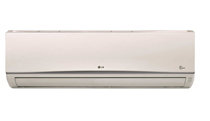
Fig. 1: Image Of Air Conditioner(AC)
Ever since the industrial age began, man has thought of hundreds of ways to outsmart nature. And out of those hundred times, man has succeeded in more than ninety nine times. Climate and weather too have been brought together as a symphony that man desires to hear. Air-conditioning is the name of the scientific method that defies unruly sun, freezing winters and humid airs. Once a sci-fi author Rober Heinklein had said “Climate is what you expect, weather is what you get.” Truly, with air-conditioner we get what we expect.
Again, work started on the science of air-conditioning and the first air-conditioner was designed in 1902. It was initially designed for industrial purposes. The inventor or “Father of Cool” Willis Carrier used coils to control moisture in the air and at the same time maintain the cool to prevent wrinkling of paper in a printing plant. It was only one year after Carrier graduated with a Masters in Engineering from Cornell University that he saw the first air conditioning in operation. He figured out that he could make the Brooklyn printing plant owner happy through his air-conditioning coils. These coils created a stable environment with which aligned four-color printing could be possible.
Filed Under: Invention Stories


Questions related to this article?
👉Ask and discuss on Electro-Tech-Online.com and EDAboard.com forums.
Tell Us What You Think!!
You must be logged in to post a comment.